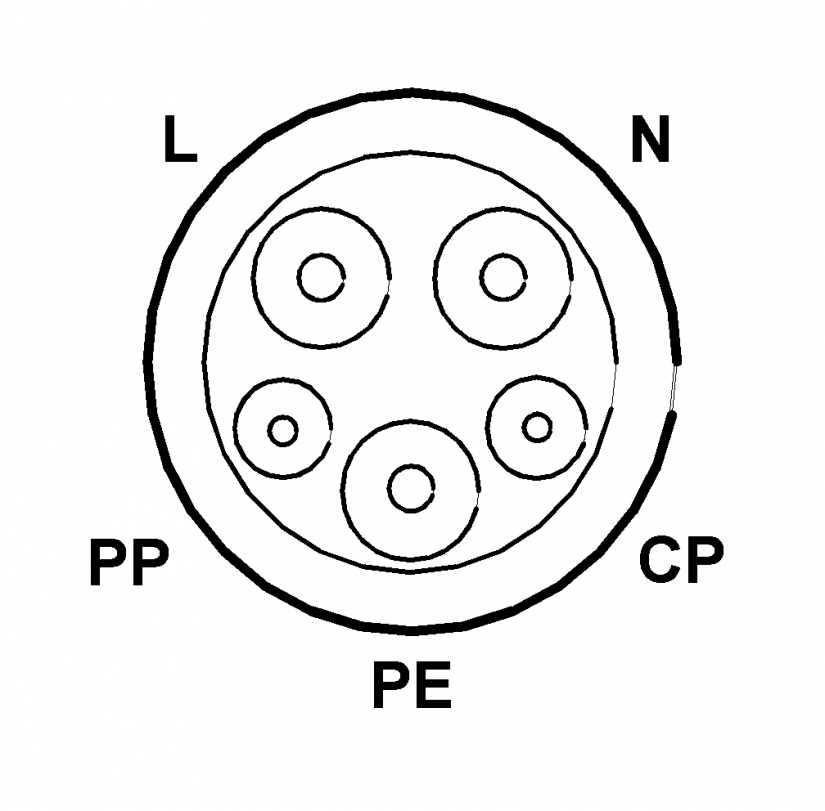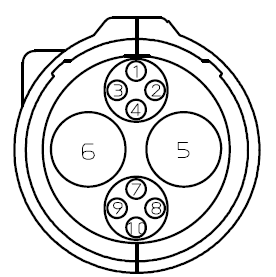Charging electric cars
To use an electric car as a company or private car for more frequent short journeys - which is probably the most efficient use today, we usually need to charge the car directly at the house, company, office and for this purpose it is suitable to charge AC power from the grid - directly from the owner. This allows us to charge the vehicle continuously, overnight, using energy from the installed PV plant, etc., but at the same time for efficient charging we need coordination of charging with other consumption - so as not to overload the main circuit breaker or make optimal use of PV power and charge the electric car as soon as possible.
Even more significant is the need for driving in the case of multiple electric cars - so that we can efficiently charge several vehicles simultaneously, or. also with the possibility of controlling charging priorities, etc.
Using the Foxtrot system supplemented by the C-EV-0302M module, we can control the charging of one or more electric cars depending on the current operation of other electrical appliances, PV production, contracted consumption curves, etc. The system monitors the current consumption current in each phase and according to the set maximum value, or according to the immediate surplus of PV production, ev. additional requirements controls the instantaneous charging current of the connected electric car via the C-EV-0302M module. The system also has information about the connection of the electric car, it can also monitor the energy supplied and thus provide basic information about the state of charge of the vehicle. At the same time, it evaluates possible fault states, can stop or interrupt charging at any time, etc. All data can be stored, displayed locally and remotely, so that an overview of the status is available, or also the possibility of intervention in charging (eg control of charging priorities when connecting more vehicles at the same time) for selected users.
According to the IEC 61851-1 standard, we distinguish 4 modes of electric vehicle charging (EV):
1) Alternating charging, use of standard socket, type. 230 V, it can also be 3x400 V, significantly limited by the maximum current (max. 16 A, but usually only 8 to 10 A), cable without communication. Simple but limited performance and no ability to control charging.
2) Alternating charging, use of a standard 230 V or 3x400 V socket, maximum 32 A, the cable is equipped with control of the maximum charging current by means of a Control Pilot signal. It allows you to manually set the maximum charging power, but it cannot be controlled according to the load of the consumption point.
3) AC charging, 230 V or 3 x 400 V, max. 32 A, a special charging device is connected to the distribution network, which contains charging control circuits and protection circuits and is equipped with a special socket and cable with a terminal intended for connecting an electric car. This concept enables continuous control of charging according to the load of the consumption point, including back diagnostics of the connection and charging of the vehicle, and we consider this variant further in the examples.
4) DC charging, use of a special DC charger with the possibility of high power (with the "CHADEMO" charger charging DC with an output of up to 62.5 kW, eg Used Nissan Leaf). It requires a special expensive charger, sufficient power of the distribution network, it is more suitable for public fast charging stations.
According to the IEC 61851-1 standard, we distinguish 3 modes of connecting an electric car for charging:
A) Connection with a cable that is firmly terminated on the EV side and terminated at the other end with a plug to a standard socket or charger socket
B) Connection with a cable that is terminated at both ends with a connector (plug, socket)
C) The cable connection, which is permanently installed on the charger side, is terminated on the car side with a socket. The following examples are proposed for this variant.
Electric cars are equipped with several types of sockets, which differ in charging power and voltage, we can easily divide them (in the pictures a view of the terminal from the front - from the "side of the car"):
Type 1 (according to SAE J1772 and IEC 62196-2) is a single-phase socket with additional PP and CP contacts. Maximum current 32 A, 230 VAC. It uses eg Nissan Leaf. Designed for charging from a standard distribution network with the possibility of using a charging device controlling the max. Current of the taken EV.
Type 2 (according to IEC 62196-2) is a three-phase socket with additional PP and CP contacts. Maximum current 63 A (for single-phase use up to 70 A), max. 500 VAC. Designed for charging from a standard distribution network with the possibility of using a charging device controlling the maximum current taken by EV.
DC charging (CHADEMO, DC Combo etc.). For DC fast charging when using special charging stations.
The PP and CP signals (according to the IEC 61851-1 standard) serve both to inform the electric car that a charging device is connected (PP signal) and to control the charging current (CP signal) - ie we can according to the instantaneous available power, given by the number of other appliances at the point of consumption, control the charging current of the vehicle so that we achieve the fastest possible charge and at the same time do not exceed the maximum current taken according to the value of the circuit breaker. Or it is possible to control the charging according to the immediate output of the local PV plant (cost minimization), etc.
 English
English


